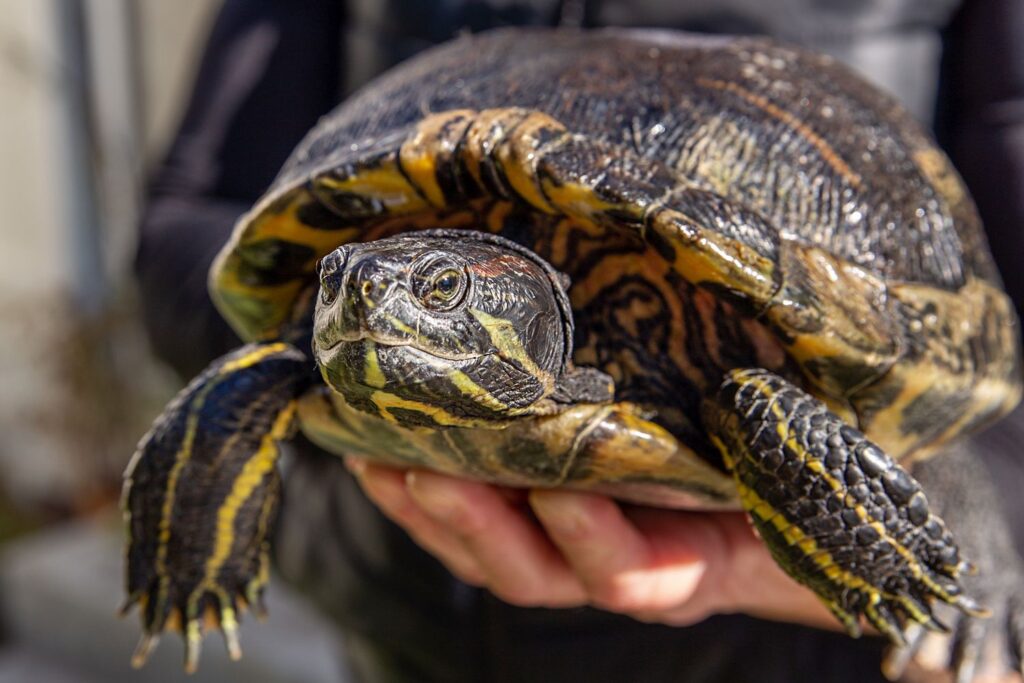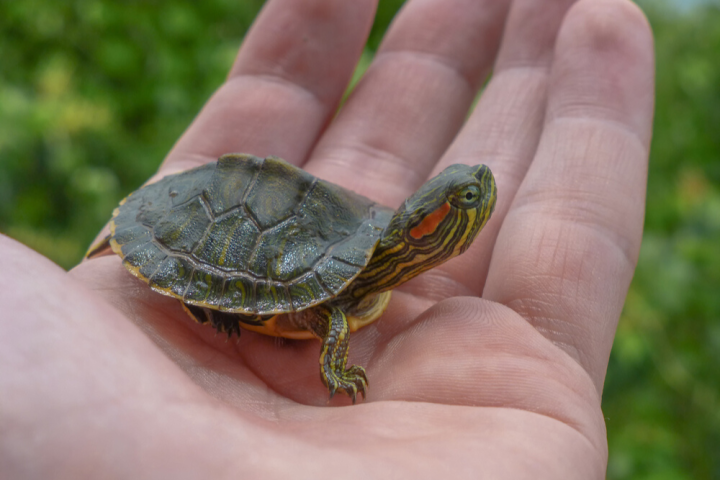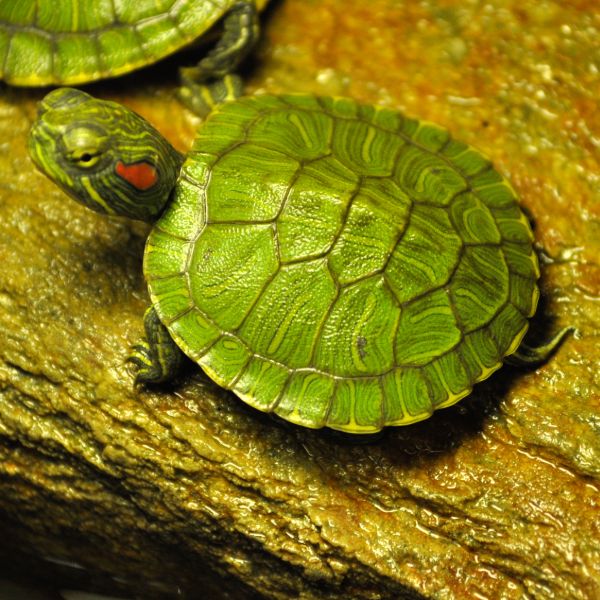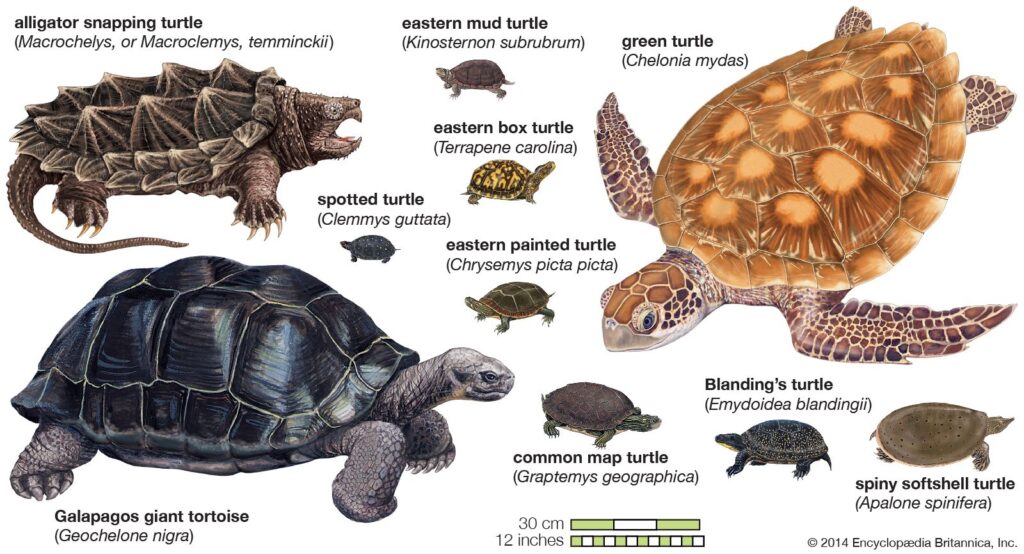So you’ve decided to get a pet turtle, but you’re not sure which species is the best fit for you and your lifestyle. Well, fear not! In this article, we will guide you through the process of choosing the right turtle species for your home and lifestyle. From the energetic Red-Eared Sliders to the docile Box Turtles, we will explore the various characteristics and requirements of different turtle species, helping you make an informed decision and ensuring a harmonious life with your new shelled friend. When it comes to choosing a turtle species as a pet, there are several factors that you need to consider. From available space to the level of care required, each aspect is important in ensuring that you are able to provide the best possible environment for your new reptile friend. In this article, we will explore the various factors to consider when choosing a turtle species, as well as provide a comprehensive list of both beginner-friendly and more challenging options.
Available Space
One of the first things you need to take into account when choosing a turtle species is the available space in your home. Turtles can vary in size, with some species growing to be several inches long while others can reach lengths of up to a foot. Therefore, it is crucial to choose a turtle species that is suitable for the space you can provide. An overly cramped enclosure can lead to stress and health issues for your turtle, so ensure that the habitat will allow them to move and explore comfortably.
Lifespan
Turtles are known for their longevity, with many species having a lifespan that can extend well beyond 20 years. This means that choosing a turtle as a pet is a long-term commitment, and you need to be prepared for the responsibilities and care that come with it. Consider your own lifestyle and future plans when selecting a turtle species, as their lifespan will require a stable and consistent environment to thrive.
Level of Care
Different turtle species have varying levels of care requirements, and it’s important to choose one that aligns with your abilities and lifestyle. Some turtles may require meticulous attention to their habitat, diet, and overall health, while others may be more forgiving in terms of care. Research the specific needs of each turtle species you are interested in to ensure that you can provide them with the care they require to live a happy and healthy life.
Activity Level
Another factor to consider when selecting a turtle species is the activity level of the reptile. While some turtles are more active and require larger enclosures to provide them with ample space for movement, others are more sedentary and content with smaller living spaces. Take into account your own preferences and the amount of time you can dedicate to interacting with your turtle when considering their activity level.
Compatibility with Other Pets
If you already have other pets in your home, it is crucial to consider their compatibility with a potential turtle species. Some turtles may be more prone to aggression and may not be suitable to be housed with other animals. On the other hand, certain turtle species may thrive in a communal setting and enjoy the company of other pets. Evaluate the temperament and behavior of both your current pets and the turtle species you are interested in to ensure a harmonious living environment.
Turtle Species Suitable for Beginners
For those who are new to turtle keeping, it is advisable to start with species that are known to be beginner-friendly. These turtles are generally more adaptable and forgiving in terms of care requirements, making them ideal for novice reptile enthusiasts. Here are three turtle species that are suitable for beginners:
Red-Eared Slider
The Red-Eared Slider is one of the most popular turtle species kept as pets. Known for their distinctive red markings on the sides of their head, these turtles are relatively easy to care for and can adapt well to a variety of habitats. They are omnivorous, with a diet that consists of both plant matter and small aquatic prey.
Eastern Box Turtle
The Eastern Box Turtle is a terrestrial turtle species that is native to the eastern parts of the United States. These turtles have a unique ability to retract their head, legs, and tail into their shell for protection. They are primarily herbivorous, with a diet that consists of leafy greens and fruits. Eastern Box Turtles have a docile temperament, making them great for beginners who are looking for a turtle with minimal aggression.
Russian Tortoise
The Russian Tortoise is a popular choice for turtle enthusiasts due to its small size and relatively easy care requirements. These tortoises are native to Central Asia and can adapt well to a variety of habitats. They are herbivorous and require a diet primarily composed of leafy greens and vegetables. Russian Tortoises have a friendly disposition and are generally easy to handle, making them a great choice for beginners.
Turtle Species for Experienced Keepers
For those with more experience in turtle keeping and are ready to take on more challenging species, there are several options available. These turtles may have more specific care requirements and may be more sensitive to changes in their environment. Here are three turtle species that are suitable for experienced keepers:
Painted Turtle
The Painted Turtle is a native species to North America and is known for its colorful shell markings and bright red and yellow stripes on its neck. These turtles are omnivorous and have a varied diet consisting of both plant matter and proteins. Painted Turtles require specific environmental conditions, including a well-heated basking area and access to clean water for swimming.
Spotted Turtle
The Spotted Turtle is a small, semi-aquatic species that is native to eastern parts of North America. These turtles have black shells with vivid yellow spots, giving them their distinctive appearance. They primarily feed on small aquatic insects, fish, and plant matter. Spotted Turtles require a well-maintained aquatic habitat with clean water and a basking area for thermoregulation.
Musk Turtle
Musk Turtles, also known as Stinkpots, are small aquatic turtles with a distinct musky odor that they use as a defense mechanism. Native to North America, these turtles are primarily carnivorous, feeding on small aquatic prey such as insects, fish, and snails. Musk Turtles require a well-maintained aquatic habitat with clean water, hiding spots, and access to both land and water for basking purposes.

Aquatic Turtles
Aquatic turtles are a popular choice among turtle enthusiasts due to their graceful swimming abilities and fascinating behaviors. These turtles require a well-maintained aquatic habitat with plenty of swimming space and access to basking areas. Here are three aquatic turtle species that you may consider:
Red-Bellied Turtle
The Red-Bellied Turtle, also known as the Red-Bellied Cooter, is a semi-aquatic turtle species native to the southeastern United States. These turtles have a reddish-orange plastron, or underside of their shell, giving them their name. Red-Bellied Turtles are omnivorous, feeding on a variety of plant matter, insects, and small fish. They require a spacious aquatic enclosure with clean water, a basking area, and ample hiding spots.
Cumberland Slider
The Cumberland Slider, also known as the Cumberland Cooter, is a species of aquatic turtle native to the United States. They are closely related to the Red-Eared Slider and have similar care requirements. These turtles are omnivorous and have a varied diet consisting of both plant matter and small aquatic prey. Cumberland Sliders require a large aquatic enclosure with clean water, a basking area, and ample space for swimming.
Map Turtle
The Map Turtle is a genus of turtles that includes several species, all of which are native to North America. These turtles are known for their unique shell markings that resemble topographic maps. Map Turtles are primarily carnivorous, feeding on small aquatic prey such as insects, fish, and snails. They require a well-maintained aquatic habitat with clean water, a basking area, and ample hiding spots.
Semi-Aquatic Turtles
Semi-aquatic turtles are a balance between aquatic and terrestrial lifestyles and require habitats that cater to both their swimming and basking needs. These turtles need access to both land and water to thrive. Here are three semi-aquatic turtle species that you may consider:
Wood Turtle
The Wood Turtle, also known as the Eastern Wood Turtle, is a semi-aquatic species native to North America. These turtles have a unique pattern on their shells, resembling growth rings found in tree trunks. Wood Turtles are omnivorous and have a varied diet consisting of both plant matter and small invertebrates. They require a habitat with both a swimming area and a terrestrial area, along with ample hiding spots and a basking area.
Reeves’ Turtle
Reeves’ Turtles, also known as Chinese Pond Turtles, are semi-aquatic turtles native to East Asia. They have a unique pattern on their shells, with intricate black and yellow markings. Reeves’ Turtles are omnivorous, with a diet that consists of both plant matter and small aquatic prey. They require a habitat that includes both land and water sections, with clean water for swimming and a basking area for thermoregulation.
Bog Turtle
The Bog Turtle is a small, semi-aquatic species native to North America. Known for their small size and vibrant orange coloration on their neck and legs, Bog Turtles are among the smallest turtle species in the world. They are primarily carnivorous, feeding on small invertebrates and their larvae. Bog Turtles require a well-maintained habitat with both a wetland area for swimming and a terrestrial area for basking and nesting.

Terrestrial Turtles
Terrestrial turtles spend the majority of their lives on land and require habitats that mimic their natural environment. These turtles are not proficient swimmers and prefer to explore their surroundings on solid ground. Here are three terrestrial turtle species that you may consider:
Greek Tortoise
The Greek Tortoise, also known as the Spur-Thighed Tortoise, is a small terrestrial species native to the Mediterranean region. These tortoises have a distinctive shell shape and markings, which can vary depending on their geographic location. Greek Tortoises are herbivorous, primarily feeding on grasses, weeds, and leafy greens. They require a spacious terrestrial habitat with access to both sunlight and shaded areas for thermoregulation.
American Box Turtle
The American Box Turtle is a terrestrial turtle species native to North America. They have a unique ability to fully close and lock their shells, providing them with excellent protection against potential predators. American Box Turtles have an omnivorous diet, consisting of both plant matter and small invertebrates. They require a spacious terrestrial enclosure with access to both open areas and hiding spots, as well as a basking area for thermoregulation.
Sulcata Tortoise
The Sulcata Tortoise, also known as the African Spurred Tortoise, is one of the largest tortoise species in the world. Native to the Sahel region of Africa, these tortoises have a robust build and distinctive shell scutes. Sulcata Tortoises are herbivorous, with a diet that consists of various grasses and plants. They require a large outdoor enclosure with both open areas and shaded spots, as well as a secure indoor enclosure for protection during colder months.
Dietary Requirements
Proper nutrition is essential for the health and well-being of your turtle. Different turtle species have varying dietary requirements, with some being strict herbivores, others being omnivores, and some even primarily carnivorous. Here are the three main dietary categories for turtles:
Vegetarian Turtles
Many turtle species are primarily herbivorous and require a diet rich in plant matter. Leafy greens, vegetables, and fruits should make up the majority of their diet. This includes options such as kale, collard greens, dandelion greens, carrots, bell peppers, and berries. It is essential to provide a variety of foods to ensure that your turtle receives all the necessary nutrients.
Omnivorous Turtles
Omnivorous turtles have a diet that consists of both plant matter and animal proteins. They require a balance of both to maintain optimal health. In addition to leafy greens and vegetables, omnivorous turtles should also be provided with small amounts of high-quality proteins such as insects, worms, and small fish. It is important to ensure that the animal proteins are appropriate for the size and species of your turtle.
Carnivorous Turtles
Carnivorous turtles primarily consume animal proteins and have a diet that consists mainly of small aquatic prey such as insects, fish, and snails. Some carnivorous turtle species may also consume larger prey such as mice or small birds. It is essential to provide a varied diet that includes appropriate-sized prey and occasional supplementation with calcium and other essential nutrients.

Habitat Setup
Creating a suitable habitat for your turtle is crucial for their overall well-being. The habitat should mimic their natural environment as closely as possible, providing them with a comfortable and enriching space to live. Depending on the turtle species and your living situation, you can choose between indoor enclosures, outdoor enclosures, or a combination of both. Here are the key considerations for each setup:
Indoor Enclosures
Indoor enclosures are a popular choice for turtle keepers, as they allow for greater control over environmental conditions and are suitable for year-round keeping. When setting up an indoor enclosure, you will need to consider the size of the enclosure, suitable lighting and heating, appropriate substrate, and a reliable filtration system for aquatic turtles.
Outdoor Enclosures
If you live in a climate that allows for it, providing your turtle with an outdoor enclosure can be a great way to allow them to experience natural sunlight and a more spacious environment. Outdoor enclosures require careful consideration of factors such as climate, predator protection, and appropriate shading and hiding spots. It is essential to ensure that the enclosure is escape-proof and provides adequate protection from potential threats.
Terrariums vs. Aquariums
When setting up an indoor enclosure for aquatic turtles, you have the option of using either a terrarium or an aquarium. Terrariums are designed to provide both land and water areas for semi-aquatic turtles, while aquariums are best suited for species that require primarily aquatic environments. Consider the specific needs of your turtle species and choose a setup that will accommodate their lifestyle and care requirements.
Social Needs
Turtles have varying social needs, with some species being solitary and others thriving in group living situations. Understanding the social needs of your turtle species is important in ensuring their overall well-being. Here are the key factors to consider when it comes to the social needs of turtles:
Solitary Turtles
Some turtle species are naturally solitary and prefer to have their own space without the presence of other turtles. These turtles may become stressed or exhibit aggressive behaviors if housed with other turtles. It is important to provide solitary turtles with an appropriate-sized enclosure that allows them to have their own territory and personal space.
Group Living Turtles
Certain turtle species thrive in group living situations and enjoy the company of their own kind. These turtles may engage in social behaviors such as basking together or interacting with each other. If you are considering housing multiple turtles together, ensure that the enclosure is large enough to accommodate their needs and that there are ample basking areas and hiding spots for each turtle.
Size of Enclosure
Regardless of whether your turtle is solitary or prefers group living, it is crucial to provide them with an appropriately sized enclosure. Turtles need ample space to move around, explore, and engage in natural behaviors. A cramped enclosure can lead to stress, aggression, and health issues for your turtle. Research the specific space requirements of your turtle species and provide them with a habitat that allows for adequate movement and exercise.

Handling and Interaction
While some turtles enjoy being handled and interacted with, others prefer minimal human interaction. It is important to respect your turtle’s preferences and personality when it comes to handling. Here are the key considerations for handling and interaction with turtles:
Turtles that Enjoy Handling
Certain turtle species are more comfortable with human interaction and may enjoy being handled and petted. These turtles may be more docile and calm, making them suitable for owners who wish to have a more hands-on relationship with their pet. It is important to handle these turtles with care and provide them with appropriate support and security when picking them up.
Turtles that Prefer Minimal Interaction
Some turtle species are more nervous or skittish by nature and prefer minimal interaction with humans. These turtles may become stressed or anxious when handled, and it is important to respect their boundaries. Focus on providing them with a secure and enriching environment that allows them to exhibit natural behaviors without feeling overwhelmed.
Handling Techniques
When handling a turtle, it is important to follow proper techniques to ensure both your safety and the well-being of the turtle. Support the turtle’s body and shell, avoiding excessive pressure or squeezing. Avoid handling the turtle too frequently, as this can cause stress. Always wash your hands before and after handling to prevent the spread of bacteria.
Legal Considerations
Before acquiring a turtle as a pet, it is crucial to be aware of the legal considerations and regulations surrounding turtle keeping in your area. Laws and regulations regarding turtle ownership can vary depending on your location. Here are the key factors to consider in terms of legal considerations:
Local Laws and Regulations
Different jurisdictions may have specific laws and regulations pertaining to turtle ownership. Some areas may require permits or licenses for keeping certain turtle species, while others may have restrictions on the size or number of turtles you can keep. Familiarize yourself with the local laws and regulations in your area to ensure that you are in compliance and can provide the best care for your turtle within legal boundaries.
Protected Species
Certain turtle species may be protected under local or international regulations due to conservation concerns. These protected species may be subject to additional restrictions or requirements when it comes to ownership and trade. It is crucial to research the status of the turtle species you are interested in and ensure that they can be legally kept as pets in your area.
Ethical Sourcing
When acquiring a turtle as a pet, it is important to consider the ethical sourcing of the animal. Avoid purchasing turtles from illegal or unethical sources, such as the wild-caught pet trade. Instead, opt for reputable breeders or adoption centers that promote ethical practices and prioritize the well-being of the turtles. Responsible sourcing helps support conservation efforts and ensures that you are obtaining a healthy and legally-owned turtle.
In conclusion, choosing the right turtle species for your home and lifestyle involves careful consideration of various factors. From available space and lifespan to level of care and compatibility with other pets, each aspect plays a crucial role in determining the best turtle species for you. Whether you are a beginner looking for a low-maintenance pet or an experienced keeper ready for a more challenging species, there is a turtle out there that can fit your needs. Remember to research the specific requirements and behaviors of each turtle species and provide them with the proper habitat, diet, and care to ensure their health and happiness for years to come.

